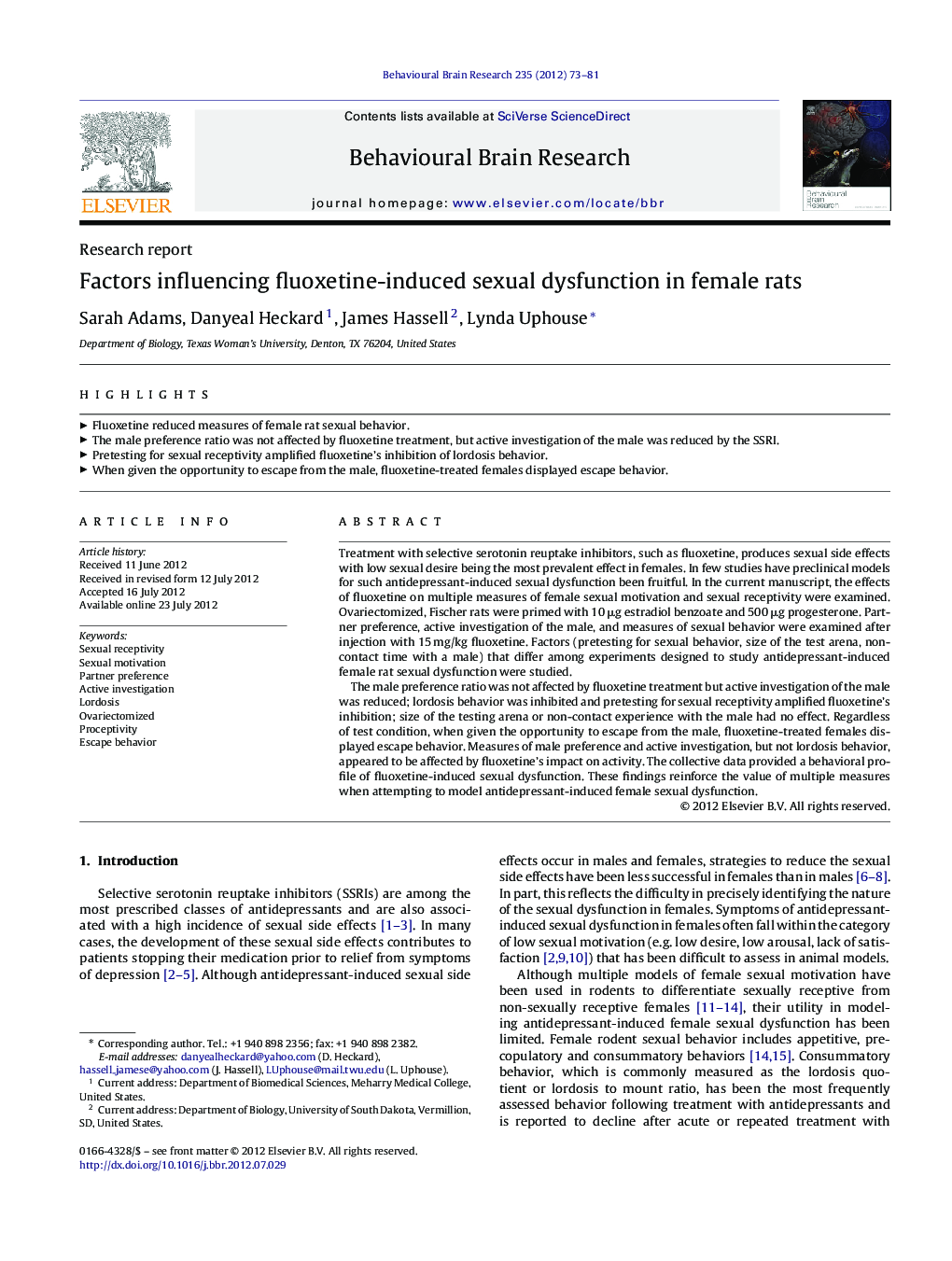| Article ID | Journal | Published Year | Pages | File Type |
|---|---|---|---|---|
| 4313053 | Behavioural Brain Research | 2012 | 9 Pages |
Treatment with selective serotonin reuptake inhibitors, such as fluoxetine, produces sexual side effects with low sexual desire being the most prevalent effect in females. In few studies have preclinical models for such antidepressant-induced sexual dysfunction been fruitful. In the current manuscript, the effects of fluoxetine on multiple measures of female sexual motivation and sexual receptivity were examined. Ovariectomized, Fischer rats were primed with 10 μg estradiol benzoate and 500 μg progesterone. Partner preference, active investigation of the male, and measures of sexual behavior were examined after injection with 15 mg/kg fluoxetine. Factors (pretesting for sexual behavior, size of the test arena, non-contact time with a male) that differ among experiments designed to study antidepressant-induced female rat sexual dysfunction were studied.The male preference ratio was not affected by fluoxetine treatment but active investigation of the male was reduced; lordosis behavior was inhibited and pretesting for sexual receptivity amplified fluoxetine's inhibition; size of the testing arena or non-contact experience with the male had no effect. Regardless of test condition, when given the opportunity to escape from the male, fluoxetine-treated females displayed escape behavior. Measures of male preference and active investigation, but not lordosis behavior, appeared to be affected by fluoxetine's impact on activity. The collective data provided a behavioral profile of fluoxetine-induced sexual dysfunction. These findings reinforce the value of multiple measures when attempting to model antidepressant-induced female sexual dysfunction.
► Fluoxetine reduced measures of female rat sexual behavior. ► The male preference ratio was not affected by fluoxetine treatment, but active investigation of the male was reduced by the SSRI. ► Pretesting for sexual receptivity amplified fluoxetine's inhibition of lordosis behavior. ► When given the opportunity to escape from the male, fluoxetine-treated females displayed escape behavior.
